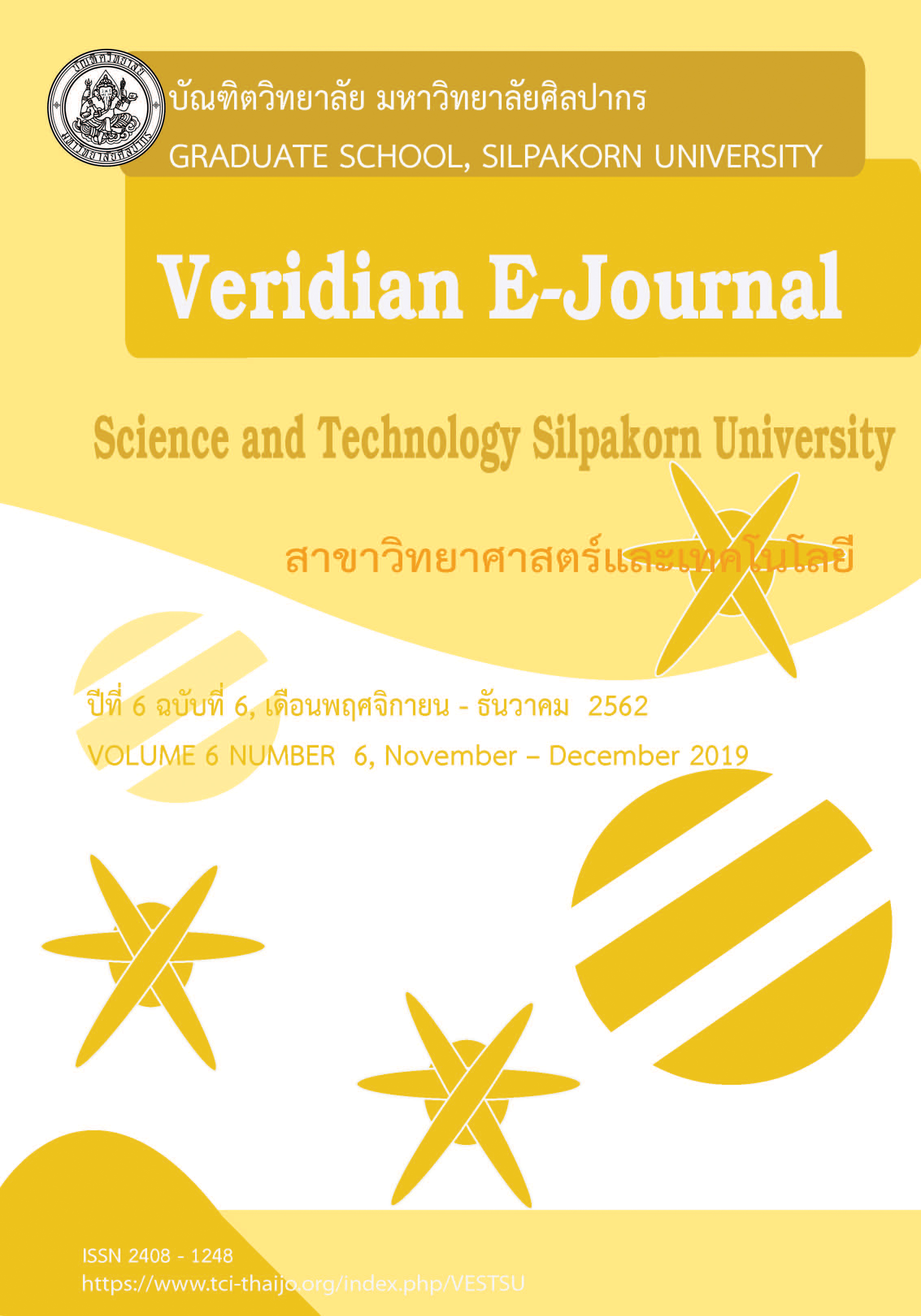ผลของการยกร่องปลูกที่มีต่อความชื้นในดินและผลผลิตมันสำปะหลังพันธุ์ห้วยบง 60 (Effect of Ridge Planting on Soil Moisture and Yield of Cassava Huay Bong 60)
Main Article Content
Abstract
งานวิจัยนี้มีวัตถุประสงค์ เพื่อศึกษาผลของการยกร่องปลูกต่อความชื้นในดินและผลผลิตมันสำปะหลังพันธุ์ห้วยบง 60 โดยวางแผนการทดลองแบบบล็อกสุ่มสมบูรณ์ จำนวน 4 ซ้ำ ในพื้นที่ทดลองอำเภอบ้านฉาง จังหวัดระยอง โดยยกร่องปลูกมันสำปะหลัง 3 รูปแบบ คือ การยกร่องใหญ่ปลูกแถวคู่ (T1) กว้าง 2.4 เมตร การยกร่องกลางปลูกแถวเดี่ยว (T2) กว้าง 1.2 เมตร และการยกร่องเล็กปลูกแถวเดี่ยว (T3) กว้าง 0.9 เมตร ผลการศึกษาพบว่า การยกร่องปลูกมันสำปะหลังที่เหมาะสมส่งผลให้ได้ผลผลิตต่อไร่สูงขึ้น และจากการวัดความชื้นในดินยังพบว่า การยกร่องใหญ่ปลูกแถวคู่ (T1) มีค่าเฉลี่ยความชื้นในดินสูงกว่าการยกร่องเล็กปลูกแถวเดี่ยว (T3) เนื่องจากการยกร่องใหญ่ (T1) สามารถกักเก็บความชื้นไว้ในดินได้มากกว่าการยกร่องเล็ก (T3) เพราะรูปทรงของร่องที่มีขนาดใหญ่ทำให้การระเหยของน้ำในดินช้ากว่าร่องที่มีรูปทรงเล็กกว่า สำหรับการเปรียบเทียบความชื้นของการยกร่องใหญ่ปลูกแถวคู่ (T1) กับ การยกร่องเล็กปลูกแถวเดี่ยว (T3) มีความแตกต่างกันอย่างมีระดับนัยสำคัญทางสถิติที่ 0.01 อย่างไรก็ตามจะเห็นได้ว่า ผลผลิตของการยกร่องใหญ่ปลูกแถวคู่ (T1) มีปริมาณผลผลิตเฉลี่ยสูงสุดคือ 6.89 ตันต่อไร่ ส่วนการยกร่องกลางปลูกแถวเดี่ยว (T2) มีปริมาณผลผลิตเฉลี่ย 6.11 ตันต่อไร่ และการยกร่องเล็กปลูกแถวเดี่ยว (T3) มีปริมาณผลผลิตเฉลี่ยต่ำสุดคือ 5.25 ตันต่อไร่ สำหรับการเปรียบเทียบผลผลิตที่ได้จากการยกร่องใหญ่ปลูกแถวคู่ (T1) ที่สูงกว่าการยกร่องเล็กปลูกแถวเดี่ยว (T3) มีความแตกต่างกันอย่างมีระดับนัยสำคัญทางสถิติที่ 0.05
The objective of the study was to study the effect of ridge planting on soil moisture and yield of cassava Huay Bong 60 Variety by utilizing the experimental research. The experiment were designed by using randomized complete block design (RCBD) with 4 replications at Banchan district, Rayong province. There were 3 different ridges, namely large ridges with two rows (T1) with 2.4 meters wide; middle ridges (T2) with 1.2 meters wide and small ridges (T3) with 0.9 meters wide. The results showed that the appropriate of ridge planting could lead to an increased yield. The soil moisture measured by Arduino UNO R3 Sensor revealed that the large ridges with two rows (T1) had a significantly higher average soil moisture content than small ridges (T3). Furthermore, a higher soil water storage capacity were shown in the large size of planting ridges with two rows (T1) than small planting ridges (T3) as the result of a decreased evapotranspiration. The large ridges with two rows (T1) had a significantly higher average soil moisture content than small ridges (T3) with a confidence level at 0.01. However, the large ridges with two rows (T1) produced the highest yield at 6.89 ton per rai, the middle ridges (T2) produced the yield at 6.11 ton per rai and the small ridges (T3) produced the lower yield at 5.25 ton per rai. The large ridges with two rows (T1) had a significant higher yield than small ridges (T3) with a confidence level at 0.05.

